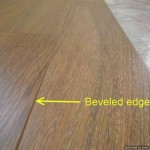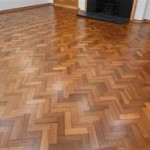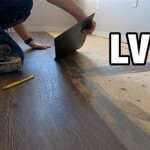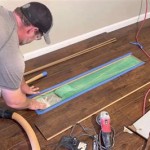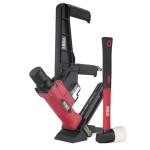Can You Install Radiant Heat Under Vinyl Flooring?
Vinyl flooring has become increasingly popular due to its durability, water resistance, and affordability. It is also compatible with radiant heat systems, making it an ideal choice for homeowners seeking warmth and comfort underfoot.
Radiant heat systems work by warming the floor from below, radiating heat evenly throughout the room. This method is more efficient than traditional forced-air systems, as it eliminates heat loss through drafts and stratification. Moreover, it provides a gentle and consistent warmth that is particularly beneficial for those with joint pain or circulation issues.
Compatibility of Vinyl Flooring with Radiant Heat
Most types of vinyl flooring are compatible with radiant heat systems. However, there are a few exceptions to consider:
- Solid Vinyl Planks (LVP): These are generally compatible with radiant heat systems, but it is essential to check the manufacturer's specifications.
- Luxury Vinyl Tiles (LVT): LVT is also typically compatible with radiant heat, but again, it is crucial to consult the manufacturer's guidelines.
- Vinyl Sheet Flooring: Sheet vinyl is usually compatible with radiant heat, but it may require a thicker underlayment to ensure even heat distribution.
- Peel-and-Stick Vinyl: Peel-and-stick vinyl flooring is not compatible with radiant heat systems.
Installation Considerations
When installing vinyl flooring over radiant heat, there are several factors to consider:
- Maximum Temperature: Most vinyl flooring can withstand temperatures up to 85°F (29°C). However, it is vital to check the manufacturer's specifications for the specific flooring product.
- Underlayment: An underlayment is essential for radiant heat systems to ensure even heat distribution and protect the vinyl flooring from damage. The underlayment should be compatible with both the radiant heat system and the vinyl flooring.
- Adhesive: If using an adhesive to install the vinyl flooring, ensure it is suitable for radiant heat installations. Some adhesives may release harmful fumes when heated.
- Acclimation: Before installing vinyl flooring over radiant heat, allow it to acclimate to the room temperature for at least 24 hours. This will help prevent buckling or warping.
- Thermostat: A programmable thermostat is recommended for radiant heat systems to control the temperature and ensure the vinyl flooring does not overheat.
Benefits of Radiant Heat with Vinyl Flooring
Installing radiant heat under vinyl flooring offers several advantages, including:
- Enhanced Comfort: Radiant heat provides a warm and cozy ambiance, reducing the need for additional heating sources.
- Energy Efficiency: Radiant heat systems are more efficient than forced-air systems, leading to energy savings.
- Improved Indoor Air Quality: Radiant heat does not circulate air, reducing the spread of allergens and dust.
- Increased Durability: Vinyl flooring with radiant heat tends to last longer, as it is less prone to buckling and warping.
Conclusion
Vinyl flooring is an excellent choice for radiant heat systems due to its compatibility, durability, and comfort. By following the installation considerations outlined above, homeowners can enjoy the benefits of radiant heat while enhancing the aesthetic appeal and functionality of their living spaces.

Heated Vinyl Floors Everything You Need To Know

How To Install Radiant Floor Heating Under Luxury Vinyl Tile

Heated Vinyl Floors Everything You Need To Know

How To Install Radiant Floor Heating Under Luxury Vinyl Tile

Guide For Installing Radiant Floor Heating Under Vinyl Tiles

Luxury Vinyl Flooring And Radiant Floor Heat

Installing Electric Floor Heating Under Luxury Vinyl Tile With Self Leveling Concrete

How To Install Radiant Floor Heating Under Luxury Vinyl Tile

Can You Use Radiant Heat Under Vinyl Plank Flooring Mp Global S Llc

Best Flooring To Install Over A Radiant Heating System Today S Homeowner
Related Posts


